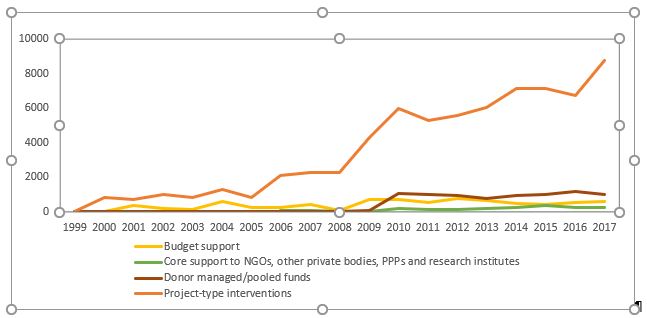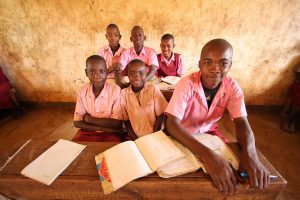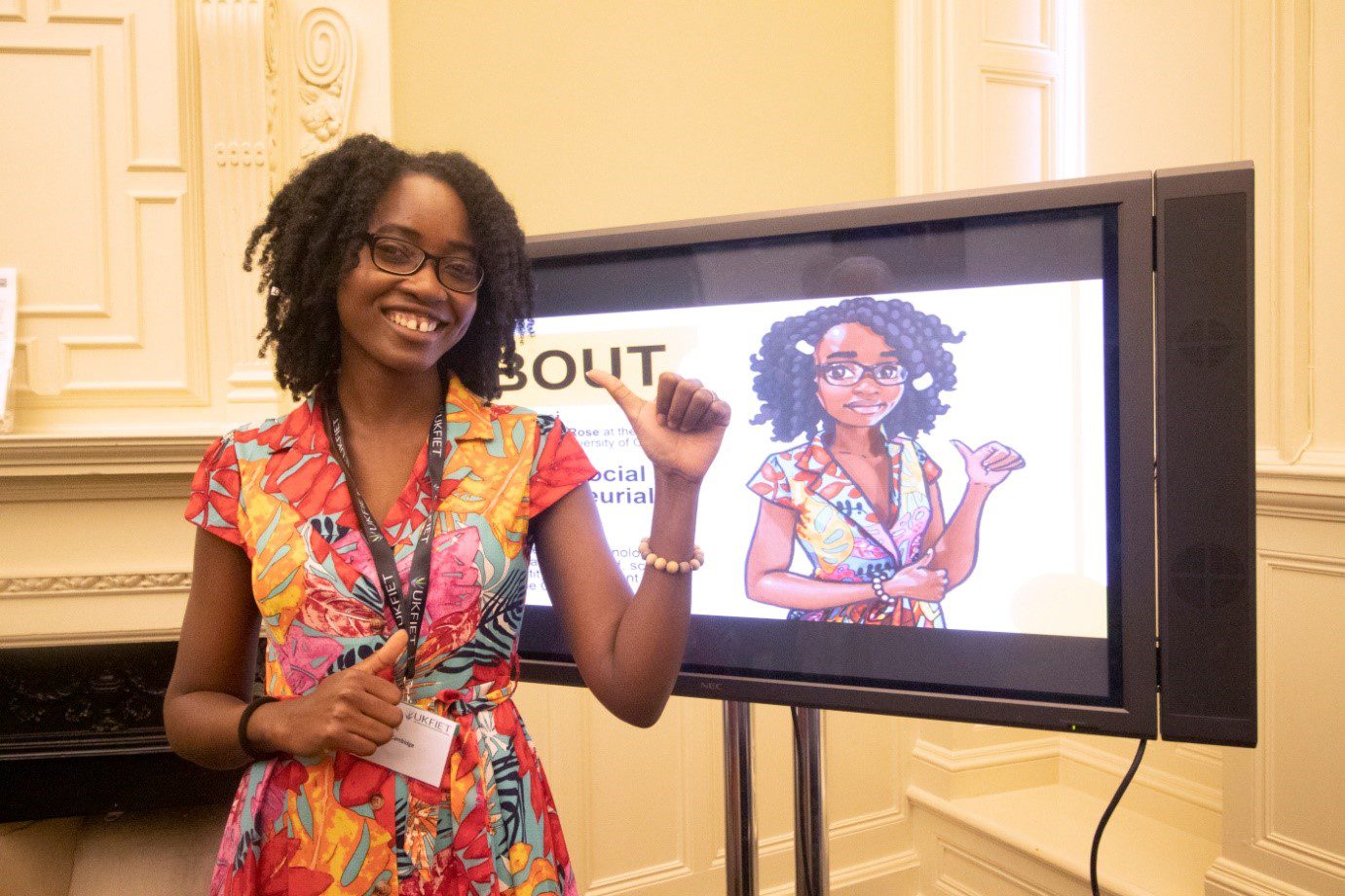This blog was written by Fergal Turner, Education Consultant with Itad Ltd. The author will be making a presentation entitled ‘From alignment to accountability: developing a framework for how pooled funding mechanisms can finance the development of inclusive education systems’ at the September 2019 UKFIET conference.
The alignment of funding for education with government systems, as advocated for by the Paris Aid effectiveness declaration, seems not to have materialised. OECD figures show that increases in budget support for education have been vastly outstripped by the growth in project-type interventions. While this is perhaps symptomatic of a global movement push for ownership, visibility and accountability in bilateral aid budgets – it may also be a signifier of an evolution of thinking around alignment, harmonisation and government ownership.

Figure 1 – ODA for education from all official donors by aid type 1999-2017 (2016 Constant US$ 000s) – Source: OECD-DAC Creditor Reporting Standard (CRS) data (stats.oecd.org)
The tension, broadly stated, is between “short term financial effectiveness, and long-term state building”. The implicit addendum to this being “what are the implications of this tension for increasing the amount and quality of funding being directed to the most marginalised learners?”.
This tension shows a continuum between projectised, off-budget support and fully aligned direct budget support. However, when government systems are weak, or non-financial alignment between donors and government is weak, financial alignment can reduce accountability – impeding state-building and reducing financial effectiveness.
Given the lack of appetite globally for budget support, can Multi Donor Trust Funds (MDTFs) and other off-budget harmonised funds provide the right choice across the board? Is there a spectrum from weak governance to strong governance which countries should be placed on, to decide the most effective models of aligning funding? To answer this, we need to look at what the priorities are for any paradigm aiming to build accountability and improve the amount and quality of education financing.
- Creating models that allow for inclusive engagement: Alignment of funding should be balanced with ease of access – creating open systems that allow for harmonised investments from government, bi-lateral and multi-lateral donors, as well as NGOs and the private sector. This means ways to commit and align funding without pooling money – allowing for hybrids between pooled funding and co-financing.
- Balancing accountability with capacity building: Recognising the strengths and limitations of Public Finance Management capacity in government should be a key factor in decision making around who administers funding, while also looking to build strength within those systems.
- Building holistic approaches to alignment: The administration of funding is only as strong as the coordinating structures that surround it. Support for alignment of funding and crowding in of finance should start with robust sector planning mechanisms and inclusive dialogue mechanisms.

Conducting National EFA Reviews to strengthen capacities of Member States in evidence-based planning, M&E, and to inform policy development and review. Accelerating EFA Progress through the Big Push initiative in Kenya and Uganda. ⓒ Masakazu Shibata / UNESCO
Pushing for more and better financing for education is ultimately about soft priorities and contextual adaptation, not rigid structures. What is needed in education is collaboration between a number of sectors to help guide the process of turning priorities into strategies. From our side, we need to keep our eyes, as evaluators and researchers, on the bigger picture. This means building the base of evidence around how decisions around financing effect the sector and the role that external actors play in strengthening processes. Importantly it also means pushing accountability – making sure that the pooling of resources doesn’t lead to a narrowing of priorities and viewpoints in education sectors.





